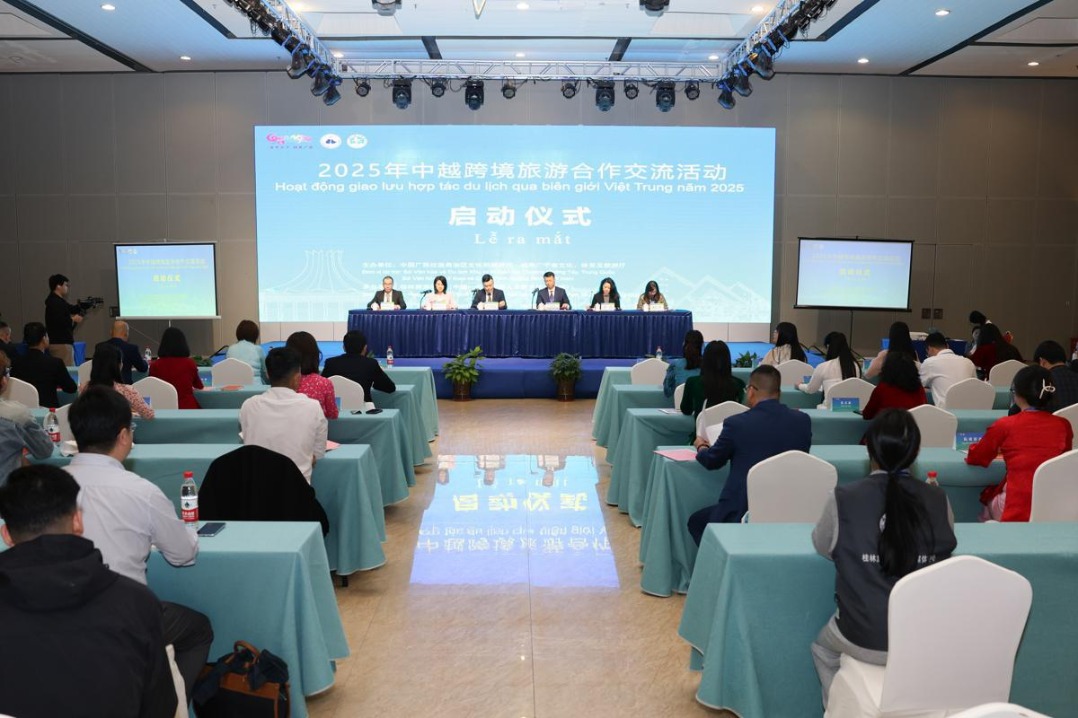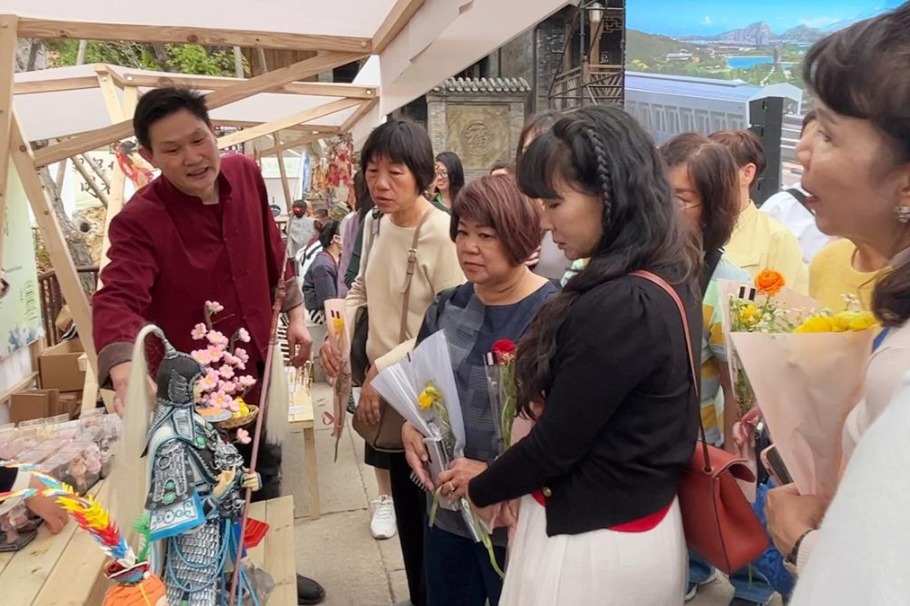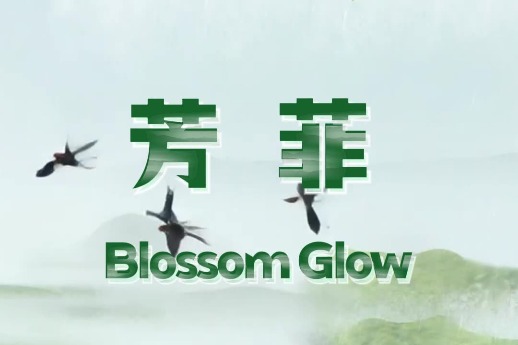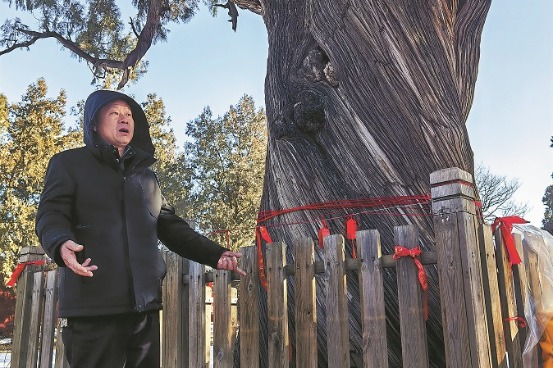Guangxi offers sanctuary for white dolphins
Conservation efforts see species better protected, sightseeing tourism thriving


Editor's note: As protection of the planet's flora, fauna and resources becomes increasingly important, China Daily is publishing a series of stories to illustrate the country's commitment to safeguarding the natural world.
In the past two decades, the population of Chinese white dolphins in Qinzhou's Sanniang Bay in the Guangxi Zhuang autonomous region has increased from fewer than 100 to over 300, safeguarding their numbers in the wild and ensuring a sustainable reproduction rate.
The Chinese white dolphin, also known as the Indo-Pacific humpback dolphin, is a first-class nationally protected animal and is listed as a vulnerable species on the International Union for the Conservation of Nature Red List.
With an estimated total population of no more than 5,000 individuals, they are mainly found in the nearshore waters of Fujian and Guangdong provinces, and the Guangxi Zhuang autonomous region. Due to their overall white or pale pink coloration in adulthood, they are called white dolphins.
"Through our observations, Sanniang Bay has a sufficient number of female dolphins of reproductive age, with three to eight dolphin calves born and surviving each year. As long as there is some interaction with the white dolphin population in the waters of Guangdong each year, the genetic diversity of this population can be maintained," said Pan Yue, who moved from Beijing to Qinzhou in 2005 to protect white dolphins.
Sanniang Bay is located at the northern tip of the Beibu Gulf. The people on the coast have made a living from fishing for centuries, and have shared a harmonious coexistence with their neighbors, Chinese white dolphins, for generations.
Especially in the past decade, an increasing number of tourists from around the world have been drawn to the area to sight-see white dolphins. The local fishermen take the tourists out to sea to search for them and make a little extra income on the side.
The rise in tourism has led to more restaurants, shops and hotels in Qinzhou and surrounding villages, and the local people feel that the white dolphins have benefited their lives greatly.
"Twenty years ago there were no tall buildings here. Now, three-to-five-story buildings are everywhere," said Lin Qiang, a volunteer at the Life Education and Chinese White Dolphin Research Conservation Center of Qinzhou Beibu Gulf. The center was set up by Pan Yue's father, Pan Wenshi, a highly respected zoologist, with the aim of protecting the dolphins.
Pan Yue said that the Qinzhou government has made significant concessions to protect the living environment of Chinese white dolphins, a gesture that has deeply touched their family.
In 2005, the Qinzhou government planned to develop a free trade zone and construct Qinzhou Port in Sanniang Bay. At that time, the then Party secretary Huang Daowei consulted Pan Wenshi to inquire whether this plan would affect the habitat of the white dolphins. Following Pan Wenshi's advice, the government decided to move the port westward, despite the higher construction costs involved.
In 2009, a foreign investment project valued at 3.8 billion yuan ($522 million) planned to build a shipyard at the mouth of the Dafeng River in Qinzhou. Once again, to protect the white dolphins and the ecological environment, the then mayor Zhang Xiaoqin, decided to abandon the project.
The Qinzhou government has continued to uphold this reverence and protection for the natural environment. Sandun Road, which crosses the bay, divides the sea between Qinzhou Port and Sanniang Bay, with the western side planned for urban industrial development and the eastern side left for the white dolphins. This has become an unwritten rule among the locals.
"Due to human activities dividing the habitat of the white dolphins into small fragments, most groups have lost the ability to naturally reproduce. Perhaps in the near future, they may disappear. Therefore, by conserving this healthy population in Qinzhou, we can ensure the continued existence of this species on Earth," said Qinzhou Mayor Wang Xiongchang.
"To protect the white dolphins is to protect Qinzhou," he added.
"The Chinese white dolphin is the flagship species of this sea area, and its presence represents the stability and health of the ecosystem here. If one day we no longer see it in this sea area, it would indicate a disruption in the chain of life in this region, and humanity would face a crisis," said Zhao Yi, Pan Yue's husband.
Contact the writers at [email protected]
- Gabon striker Aaron Boupendza dies after fall from building in China
- Chengdu has three new international friendship cities
- Zhengzhou-Cambodia forge agricultural cooperation zone
- China says US' sky-high defense budget will not make it great again
- Underwater Yangtze River railway tunnel construction reaches milestone
- China's next manned mission gets ready for launch




































